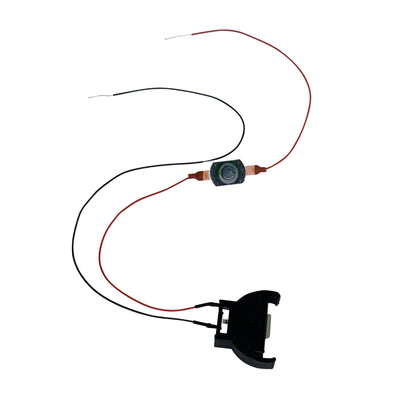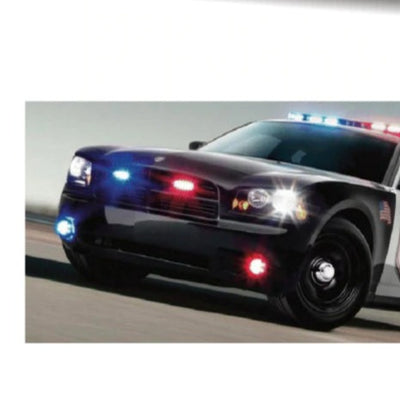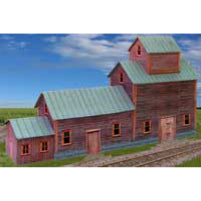A Short History of LED Lights

The history of the invention of the battery-operated LED light is a complicated one, and there were many trials and errors along the way before the mini LED lights we all know and love were invented. In this article, we will travel back in time to learn more about the first inventors of the micro LED lights sold here at Evan Designs. The micro-LED light was not invented by just one person, it took a series of inventors and a span of 55 years from the discovery of electroluminescence till the first small LED light was commercially available.
The Discovery of Electroluminescence
Electroluminescence is the mechanism by which hobby LED lights are able to shine. More specifically Electroluminescence is a phenomenon in which a material emits light when an electrical current is passed through it. The material in this specific example is the semiconductor inside the battery-powered pico LED lights sold by Evan Designs. This phenomenon of electroluminescence was first discovered by Henry Joseph Round in 1907. Round applied electricity to a crystal of silicon carbide and observed a faint yellow-green light emitted from the crystal. The light produced was not bright, and thus of no use. Due to this, future research was not continued for some time. However, this first discovery that electrical current applied to specific materials produces light paved the way for future miniature LED discoveries and is the basis for all battery-operated LED lights.
A Goose Neck chip LED lamp by Evan Designs. Without Round’s discovery in 1907, this light wouldn’t be possible!
The First Mini LED Light
Many years later in 1961, the first tunnel light diode was created. Working for Texas Instruments at the time, Robert Biard and Garry Pitman invented a tunnel light diode that emitted a light wavelength of 900 nm, close to infrared light on the light spectrum. While this little device did produce light, the low wavelengths of light were invisible to the human eye, and thus as a result this first micro-LED had no practical use in commercial lighting. They did however patent their work through Texas Instruments and are credited as the creators of the first infrared LED.
Just one year later in 1962, the first small LED light that produced light detectable by the human eye was created. The inventor of this micro-LED was Nick Holonyak Jr. and for his invention, he was known as “the father of the LED”. His creation produced red light, the first light on the visible light spectrum. This first mini LED used Gallium Arsenide in the semiconductor and while it produced visible red light, the light wasn't all that bright. Eventually, ten years later in 1972, a graduate student of Holonyak, using different chemicals in the semiconductor, created the first yellow micro-LED.
Red nano chip LEDs in the Knight Rider Circuit by Evan Designs. Red was the first battery-operated LED color invented. Red is also the first color on the visible light spectrum at 700 nm.
Making the Brightest LEDs
Evolving from this first single LED light in 1962 to the super bright LEDs sold today at Evan Designs was a long process. Throughout the following years, multiple inventors and companies experimented with the substrate in the semiconductor as well as with the LED design. Gallium Arsenide was used in semiconductors throughout the 1970s to produce a marginally brighter light, but the brightest LED didn’t arrive until the 1990s. In 1994 there was a breakthrough in LED color, the invention of the brightest blue LED. Three Japanese inventors; Isamu Akasaki, Hiroshi Amano, and Shuji Nakamura experimented using Gallium Nitride in the semiconductor to make the first blue LED. This discovery paved the way to the creation of the white LED light and because of this these inventors were credited with the Nobel Peace Prize of Physics in 2014.
Pink and Blue Chip LEDs from Evan Designs, two colors that would not be possible without discoveries from Isamu Akasaki!
Gallium Nitride is still used to make the ultra-bright LEDs we use today and the discovery of its use in the semiconductor allowed for many more colors of LEDs to be created. We hope you enjoyed this short history of the LED. Please comment below to share your thoughts on LED invention or to suggest future articles you’d like to see!
Hobby LEDs
By 2005 the design of white LEDs were refined to the point where many manufacturers embraced them for use in home & hobby lighting. It was at that time when Evan Designs first started selling miniature LEDs to hobbyists. At first customers who used other forms of lights in their hobbies were quick to embrace LEDs. In the decade that followed other hobbyist such as plastic modelers and cosplay found that LED could bring their interests to life.
Every year there are new Developments and Design Improvements in LEDs that are proving useful in hobby applications. The future is looking bright.















Leave a comment